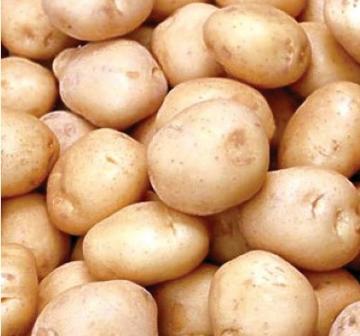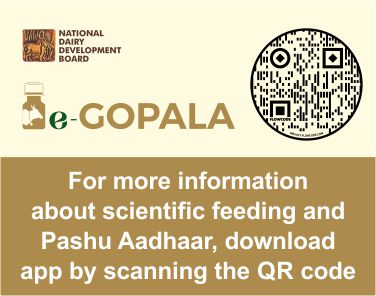
Potato (Solanum tuberosum)
Local names: Hindi: Alu Tamil: Urulai
Surplus and cull potatoes, either raw or after cooking (the water should be discarded), are suitable for most classes of livestock. Raw potatoes are not very palatable and have a laxative effect. They should therefore be introduced gradually. To get the most value from the starch, potatoes should be boiled or steamed. Potatoes may get stuck in the gullet, but this risk can be minimized if the potatoes are fed from low troughs or mashed. In India, potato production was estimated about 34391 thousand tones in 2010 (FAO).
Nutritive value
The starch content of dry matter is 70%. TDN ranges from 70-80% and crude protein varies from 9-12% and about half of this in the form of nonprotein nitrogenous compounds. Potatoes are a poor source of minerals except potassium which is very high. The phosphorus content is also higher.
Deleterious factors
Raw potatoes are not very palatable and have a laxative effect. They should therefore be introduced gradually. Potato contains an alkaloid called solanidine which occurs free and also in combination as the glycol-alkaloids chaconine and solanine. Solanidine and its derivatives are toxic to animals causing gastroenteritis. The alkaloid may be high in potatoes exposed to light. Green potatoes should be discarded. Removal of the eye and peel in which the solanidine is concentrated will reduce the toxicity. Young shoots are also likely to be rich in solanidine and these should be removed before feeding. Immature potatoes have been found to contain more solanidine than mature tubers. The risk of toxicity is reduced considerably, if potatoes are steamed or cooked and the water in which potatoes are boiled is discarded. Ensiling also destroys toxins. Ruminants are more resistant to toxicity than non ruminants because of its partial detoxification in the rumen. Frozen or dirty potatoes should never be used as feed.
Inclusion level
Dairy cows can be fed up to 15 kg of raw potato a day and beef animals up to 20 kg a day. Potato tubers can be chopped with forage and ensiled. The heat generated during the fermentation is sufficient to cook the potatoes. The haulm can be ensiled for feeding to cattle. If cattle are given not more than 20 kg a day, it is a good feed that will in no way impair health.
